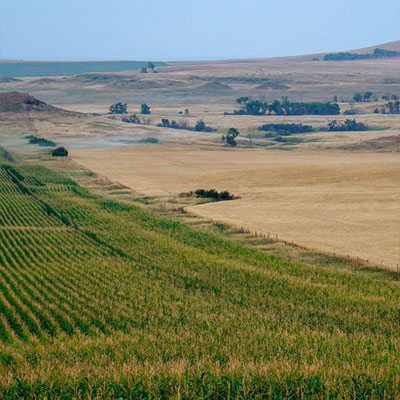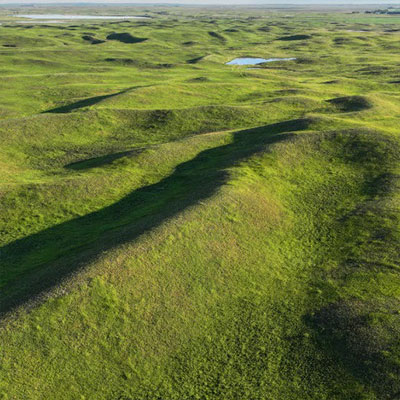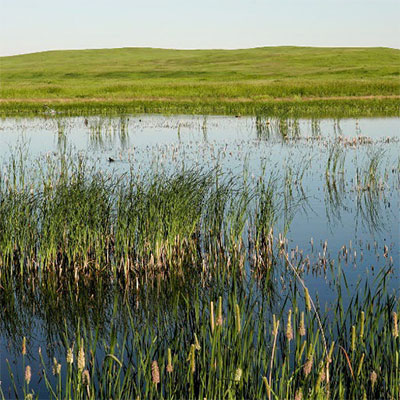Long-billed Curlew

NDGF
L 23”, WS 35”, 1.3 lb. Long, down-curved bill, buffy overall with pink-cinnamon underwings visible in flight.
Status in North Dakota
Occurs in North Dakota from mid-April to August. Peak breeding season late April to late June.
Reason for SWAP Designation
Regionally or globally imperiled (SGCN a.).
ND ranks 13th out of 17 states for highest percent of the global population during the breeding season (eBird).
The Long-billed Curlew is declining, and their range in ND has contracted substantially.
Threats
Loss of grassland.
Degradation of grasslands from invasive plants, woody encroachment, succession, and loss of diversity.
Grazing is beneficial to grassland health and diversity, but grazing during the nesting period may impact curlews by trampling or lower hatching success.
Curlews have high site fidelity, and the modification of nesting habitat may cause disruptions in the life cycle.
Classified as climate-endangered, Long-billed Curlew is projected to lose more than half of its current distribution by 2050, with no net gains of new areas (Audubon).
Increasing applications of agrochemicals.
Early mowing and normal farming practices can destroy nests or kill the adult on the nest.
Research and Monitoring
Habitat requirements and demographics have been broadly researched on the breeding grounds.
Little known about reproductive success, annual adult survival, or fledgling survival.
Satellite and GPS transmitters deployed on 11 adult curlews in ND in 2022 and 2023 to identify migratory and wintering habitats.
The Breeding Bird Survey, eBird and Partners in Flight Databases are key sources of information on distribution and population trends.
Long-billed Curlews were surveyed on established routes in 2004-2005 and since 2018 in ND.
Management Recommendations
- Protect and conserve large, intact tracks of native prairie/unbroken grassland and tame grasslands.
- Reconstruct or restore grassland adjacent to existing tracts of native prairie/unbroken grassland.
- Use native grasses when replanting or restoring grassland.
- Avoid grazing until late May or late June, to allow birds time to settle and initiate nests.
- Remove tall, dense vegetation in the fall with haying and grazing.
- Prevent or remove shrubs and tall woody vegetation in grasslands, either mechanically or by prescribed fire.
- Do not drag hayfields to break up cowpies.
- Curlews have been documented successfully using fall-seed crops (i.e. winter wheat).
- Minimize pesticide and herbicide use on grasslands.





